Today, we’re discussing a challenging question. We’ll be asking, “Are digital resources bad for kids?” I admit that this topic is probably surprising. I haven’t changed. I’m still passionate about digital materials. But it’s important to acknowledge that there can be some controversy and fear around using digital resources in speech therapy with kids.
Are Digital Speech Therapy Resources Bad for Kids?
- Minimizing screen time for very young children
- Minimizing unsupervised screen time
- Screen time and sleep
- Using digital resources thoughtfully
- The materials are not the therapist!
- Teaching digital citizenship
I wanted to acknowledge that in many ways it has felt like a heavy one. I don’t think that’s really a bad thing though. Our jobs are fun and joyful, but we also have a very serious responsibility to prioritize the wellbeing of our clients, and ask the hard questions that we’ve been asking in our time together today.
References and resources:
- Be Tech-Wise with Toddler Handout (pdf)
- Common Sense Media
- Is Social Media Threatening Teens’ Mental Health and Well-being? | Columbia University Irving Medical Center
- Youth Screen Media Habits and Sleep
- To sign up for a 7-day free trial, please check out: www.thedigitalslp.com/digitalslp
Full Transcript of Podcast: Are Digital Speech Therapy Resources Bad for Kids?
EP100 - Are Digital Speech Therapy Resources Bad for Kids?
Welcome back to another episode of the Speech Space Podcast, which is a podcast full of tips and resources for SLPs. I'm your host, Jessica Cassity, and this is Episode 100. Today, we are going to be discussing a challenging question, which is, "Are digital resources bad for kids?"
But before we jump in, I wanted to just take a moment to thank all of you that have been listening to the podcast for the past 100 episodes. I truly, truly appreciate your support and honestly, that is what motivates me to continue to put out new content on the podcast. I also quickly wanted to mention The Digital SLP membership site is what sponsors this podcast. So to learn more about The Digital SLP or to sign up for a free trial, head on over to thedigitalslp.com/digitalslp.
Now let's get started with Episode 100. When I first mentioned today's topic, you might have felt a little bit confused because after all, digital materials are my passion. I have recorded so many podcast episodes and written so many blog posts about digital tools, and I'm a huge advocate for digital resources. So I admit that today's topic is probably a little surprising.
But I have not changed. I'm still passionate about digital materials, and I do think it's important though to acknowledge that there can be some controversy and some fear sometimes around using a lot of digital resources in speech therapy with kids.
I also think it's important to acknowledge that when it comes to therapy strategies, they usually are not ALL good or ALL bad. We also don't want to exclusively use only one strategy or one type of resource. So digital materials are amazing, but in some contexts they can have drawbacks and I wouldn't generally recommend using digital materials 100% of the time unless you're doing teletherapy, which is a unique situation.
So ultimately, the short answer is no. I don't think that digital resources are bad for kids. But I do think that we need to use them thoughtfully, and I do understand some of the concerns around using digital resources. In this episode, I'll start off by talking about some of the common concerns that come up around digital resources, and then we'll move into discussing how to use digital materials skillfully to minimize the possibility of any negative effects.
Probably the most common concern that I hear about using digital materials with kids is that if they're using digital resources for therapy and for school, their screen time is increasing. As SLPs, we are probably very familiar with the adverse effects of too much screen time. There is so much research about this topic. Even ASHA joined together with the Children's Screen Time Action Network to create a handout for families about screen time. The handout recommends that toddlers don't have any screen time if possible, but it also acknowledges that for many families, this is probably unrealistic.
I think it's very important to point out that with this specific recommendation and many similar recommendations, the focus is on limiting screen time for extremely young children, usually under the age of three years old. And in these cases, I absolutely agree that the smallest amount of screen time possible is the ideal.
In our therapy with these very little ones, we do want to focus on using non-digital resources. This is often possible even if we're doing teletherapy, because we can implement a parent coaching model and have the child use materials that are already in their environment at home.
When we're using digital resources at schools or in private practice clinics, we're usually working with children who are at least a little bit older. This is where it really matters to have a nuanced understanding of the research. We might hear "no screen time!" and assume that it applies to all kids of all ages, when really the research is focused on babies and toddlers.
Also, in most of the research about screen time, the negative effects are seen when a child is just given a phone or a tablet to use on their own with limited adult interaction or supervision. So it's not surprising that that isn't great for development because we know that language input and modeling and interaction are so important as children learn to communicate.
However, it's a completely different situation when a digital resource is used in a therapeutic manner with input, involvement, and moderation from an adult. So again, we need to be cautious when we hear people say "screen time is bad," because they are often referring to a specific type of screen time that is very different from the way we use digital resources in our speech therapy sessions.
This is a little bit of a side note, but I also wanted to mention that even in situations where parents give screens to very young children and don't fully supervise their use, it's not helpful to shame parents about this. Some parents feel that they have no other choice, and that might be their reality. We might generally support them in figuring out how to incorporate more interaction in their time with their children, but we need to remember that especially over the past few years, so many parents have been in survival mode. Shaming hurts our rapport with parents and it just isn't a helpful strategy.
Okay, so thank you for following along on that small little tangent with me. I just think it's really important to mention that and something to keep in mind.
So far, we have talked about the idea that there are some instances when time on digital devices can be bad for kids. Specifically, this is when children are very young and when they are using devices on their own without any adult interaction or mediation.
There's another instance I wanted to cover when digital resources could potentially have negative consequences for kids, and that's using digital devices close to bedtime. The research is pretty clear that device use before bed can lead to poor quality sleep. There's also a strong body of research that shows how important sleep is to overall health. So we can make the connection and see that it's a good idea to limit digital devices before bed.
As SLPs, this reminder might not seem relevant, but it could be useful to share with parents if they are looking for ways to support their kids' health and development. Also, for those of us who see clients in private practice, it's not uncommon to have late afternoon and early evening therapy sessions, and even at that point in the day, it's a good idea to start to wind down the device use. So, if we have sessions that are later in the day that run into the evening, we'll definitely want to make sure that we mix things up and incorporate non-digital materials.
One final note regarding instances where digital resources can be truly bad for kids, and that's social media. The research is pretty clear that spending a lot of unsupervised time on social media has a negative effect on mental health, especially for teens. It's probably unlikely that we're using social media in our therapy sessions, but it is important for us to have awareness around this as we interact with students and families.
Now, let's move on and talk about how to use digital resources thoughtfully with our students and clients so we can minimize any potential negative effects and maximize all of the benefits. I briefly mentioned this earlier, but I did wanna say that if you are working as a teletherapist, some of these reminders might not apply to you. The nature of your work is that you'll pretty much need to use digital materials for everything, and that is completely okay.
The first idea that I wanted to share when it comes to using digital materials thoughtfully is that we can try to maximize using digital resources in situations where the digital version is actually superior or where we have a clear reason for using digital materials. In other words, we don't wanna go digital solely for the sake of going digital.
For example, you might have a student who loves board games and also has some fine motor delays that cause him to get frustrated with small game pieces. In this situation, using a digital version of the game would be a thoughtful and strategic thing to do. Or maybe you have an extremely tiny workspace and using digital books allows you to access a much bigger variety of titles with your students. That is also thoughtful and strategic! Or maybe you have many students who are working on research skills, or understanding fact versus opinion. In the world outside the therapy room, people use digital tools for working on these skills, so it makes sense that you would use them with your students as well.
The bottom line here is to really know your "why." Why did I select this digital resource? How is it supporting both my students and me?
Now, let's move on to the second way to be thoughtful about using digital resources. This one might seem obvious, but it can be an easy one to forget. With digital materials in particular, we need to remember that the materials are not the therapist. No matter how fun and exciting a resource might be, we can't just hand it to a client and expect the resource to do all of the work. The magic and the learning comes from how we skillfully facilitate the student's interaction with the resource and use it as a true teaching tool.
I have just one more idea about thoughtful use of digital tools that I wanted to share today. As therapists using digital resources with our students, we have the opportunity to teach them about digital citizenship! Of course, our primary focus is always going to be the student's goals, but digital citizenship can be embedded into so many target areas and it's woven throughout the common core standards. I've talked about this on other podcast episodes, but our students with disabilities are often particularly vulnerable in the online space, and it's definitely within our scope of practice to do some explicit teaching around how to be a good digital citizen and how to protect yourself when you encounter people who aren't being good digital citizens.
It all comes back to communication. If you'd like to build your confidence in this area, the non-profit organization, Common Sense is a great resource, and I will make sure that I link to that in the show notes. As we close out this episode, I wanted to acknowledge that our jobs can be fun and joyful, but we also have a very serious responsibility to prioritize the wellbeing of our clients and students, and to ask the hard questions that we've been asking in our time together today.
If you found today's episode to be helpful, I would be so grateful if you would take a moment to leave a five-star review to make it easier for our fellow SLPs to find us. We release new episodes twice a month, on the first and third Tuesdays. And also please don't forget to check out thedigitalslp.com/digitalslp if you are interested in exploring the membership and other content. Thanks so much for tuning in!


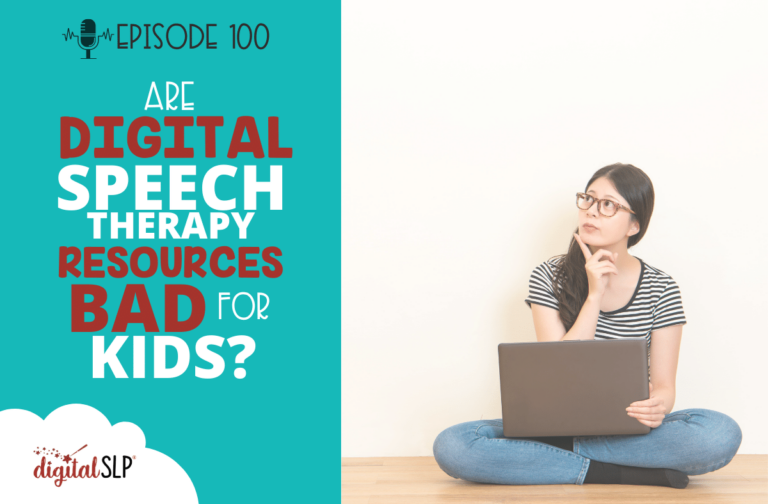



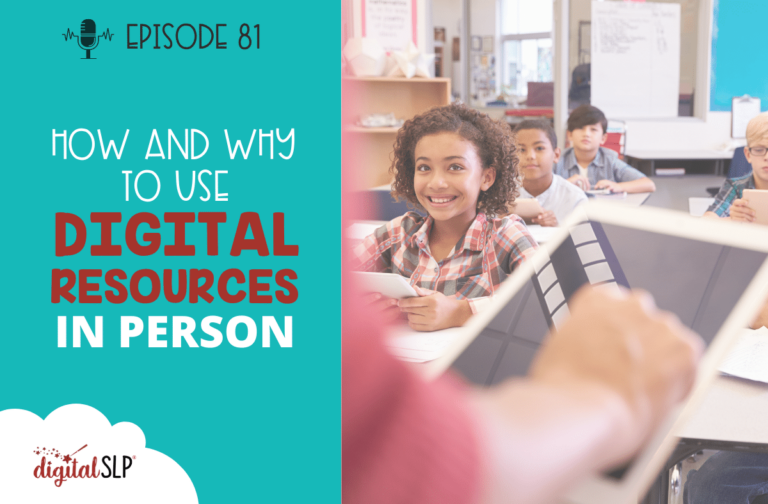
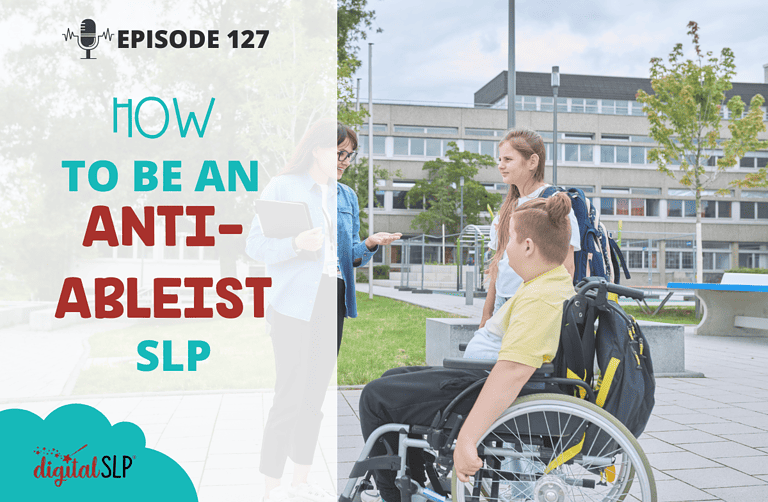

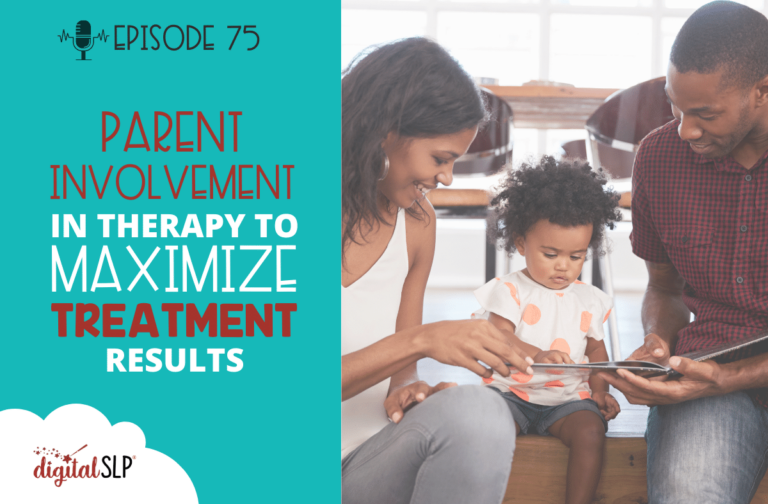
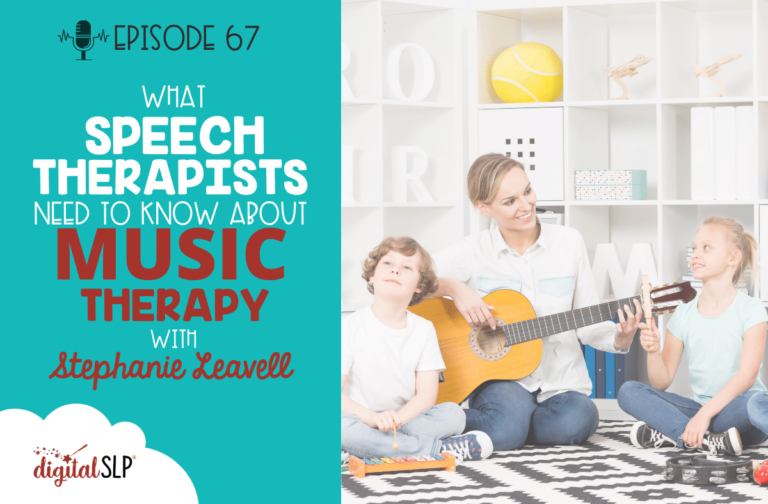
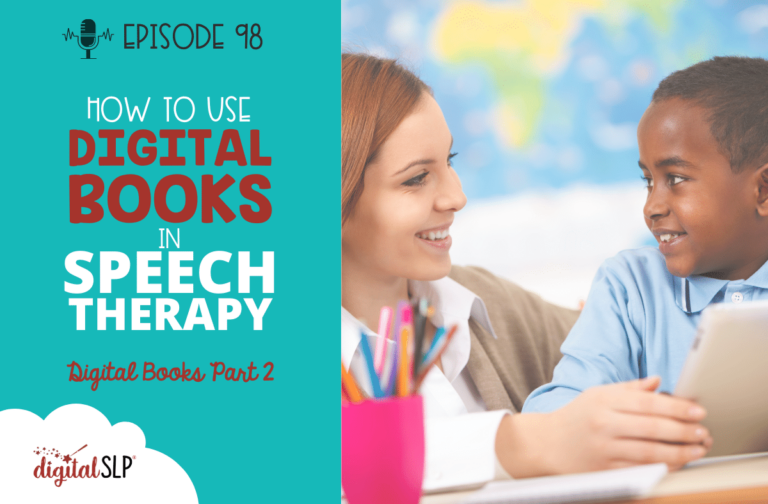

Recent Comments